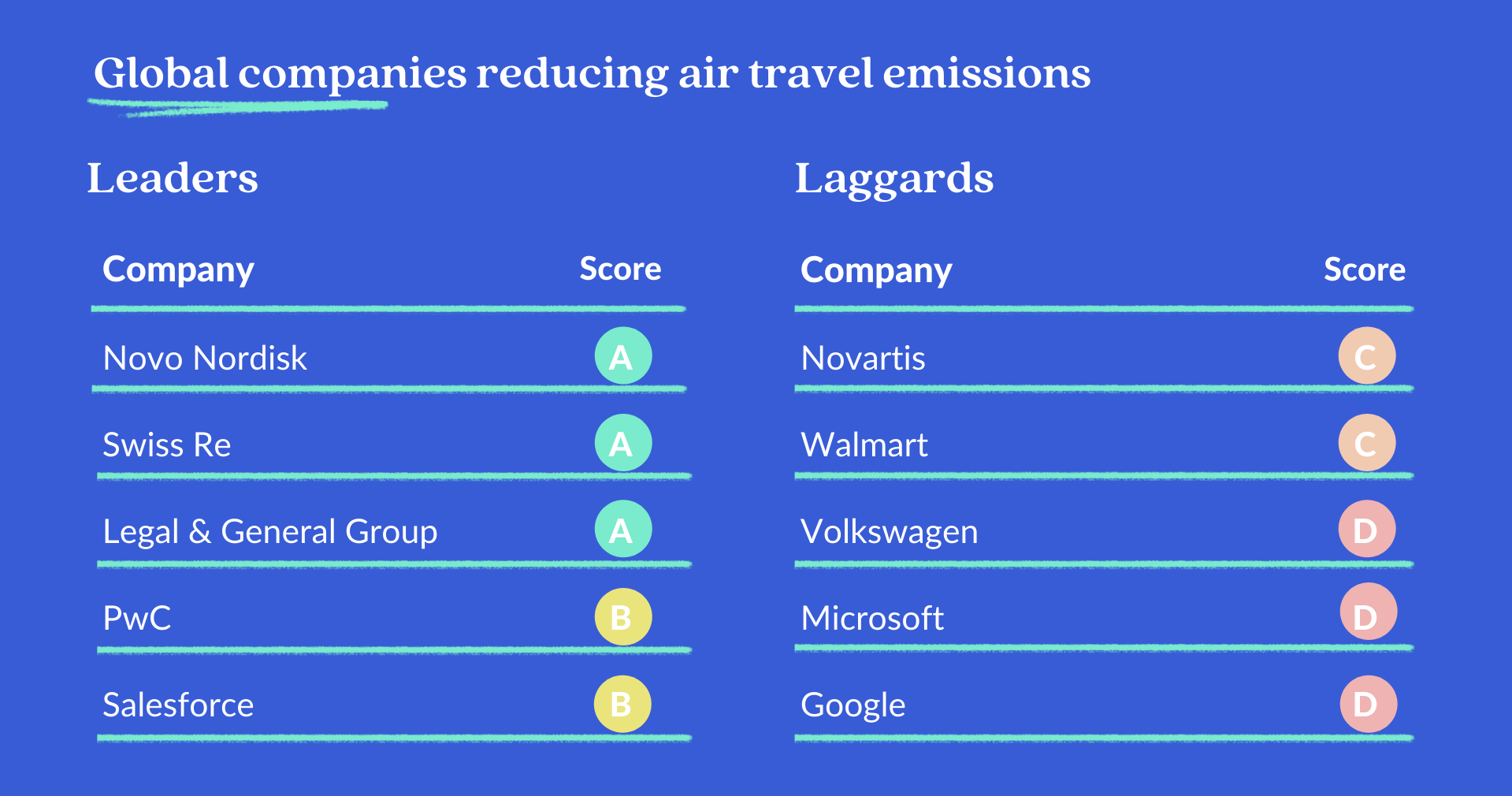This May, we launched the Travel Smartcampaign in collaboration with our U.S. partner Stand.earth and a coalition of organisations. This was a year-long journey that came at a crucial time for the direction of corporate travel, as business flying is starting to pick up post-pandemic.

Why now?
A quick look at the numbers helps to paint an accurate picture. Aviation is the most climate-intensive form of transport. Between 2005 and 2019, aviation traffic in Europe grew 67%, causing its emissions to grow at a time when they need to be falling – and emissions are projected to grow by a further 38% by 2050. Scaling up sustainable fuels and building viable zero-emissions aircraft will take at least another decade, so flying less is the best and quickest way to reduce aviation’s emissions before 2030.
Besides, frequent flyers – less than 1% of the world’s population – account for more than 50% of aviation emissions. Corporate travel is one of the biggest drivers of aviation demand. If we reduce this by 50%, it would cut emissions by 32.6 MtCO2 by 2030 in Europe, which is the same as taking 16 million polluting cars off the road.
Climate scientists and experts from the Intergovernmental Panel on Climate Change call for rapid, deep cuts, within the next three years. Reducing long-haul aviation provides the greatest potential to avoid emissions.
The pandemic saw the number of flights fall dramatically and we learned about how we could live and work in better ways. With considerably less flying, companies continued to deliver on projects and maintain connections with customers and business partners. Employees also discovered what it meant to have more time at home, when precious hours are not spent jet setting the globe.
Smarter flying is something we can all easily do. The idea of sending workers to the four corners of the planet looks increasingly outdated and inefficient. Traveling Smart is not about stopping flying, it’s about flying less and achieving more.
How did the campaign come about?
We have known about the climate impacts of business flying for decades now. But it became clear during the pandemic that we were being handed an unmissable opportunity to tackle the problem.
Now, more than ever, we could drive change and demonstrate to businesses that fewer flights and more remote meetings would have many benefits: save them money, protect employee well-being, reduce emissions, show corporate leadership in the climate crisis, meet investor expectations and ensure resilience.
And so the idea went from paper to reality in the early months of 2021.
A year later, we have over ten founding partners running our global campaign, in Europe, the US and Asia and an established ranking of 230 companies. Global companies can lead the way forward by addressing their internal flight policies, so it was important to benchmark them and get a better understanding of how they are tackling the issue.
The Travel Smart ranking allowed us to map how 230 businesses across the world are performing on commitments to reduce corporate flying and report air travel emissions. The analysis showed that many global businesses still have to make significant efforts to reduce their corporate travel emissions. Indeed, out of the 230 companies, about 80% fail to act with sufficient speed and ambition to tackle corporate travel emissions.
But more than just ranking companies’ efforts, we believe that organizations are there to drive change. Several leading companies in the ranking are showing that they can reduce corporate travel emissions by 50% or more from 2019 levels by 2025. If some can do it, others can follow. This will also send signals to industry and other actors, and help to spark changes that will contribute to an acceleration in clean aviation technology innovation and scale-up.
Business travelers make up some 12% of passengers, but up to 75% of revenues on certain flights, so their choices have important leverage on the aviation industry. It is time for corporate leaders and employees to lock in the benefits experienced, adapt corporate policies to the new paradigm of flying less and achieving more, and influence the future of sustainable aviation.
Follow the campaign for many more exciting developments.


